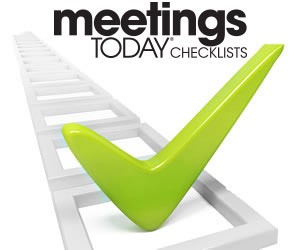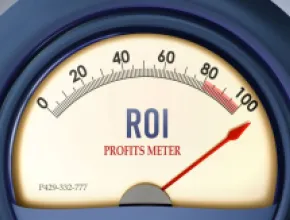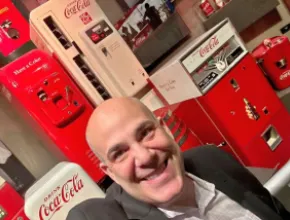Pre-Planning
- Meet with your client to determine a likely charitable partner in the meeting or incentive trip location. Has the destination been chosen already, or do you need to identify the destination and an organization within that destination?
TIP: Always look for a charitable organization that either ties in well to the company products, service, etc., or is an extension of an organization they may already be involved with. - Discuss the objectives with your client or department heads. (e.g., is the goal to create a “team-building” event, or to fulfill a philanthropic goal of the company?) Also decide the time needed to complete a project, and the proper placement of the project in your overall agenda.
TIP: Be sure to include all involved parties on the initial meeting! - Contact (by phone AND e-mail) several preferred organizations to explain your idea/cause/client, etc. If they’re interested in moving forward, schedule a site visit or further conversations. Muster all the diplomacy and respect you have for these calls and e-mails. The last thing a charity wants is to be told what they need. Prepare to listen!
TIP: The key here is “several”. The likelihood of getting an immediate response from one or any contacted is low. Once you do speak with a representative, persistence is the key in keeping your client’s interests on the front burner (of their already packed schedule - spinning many plates on a daily basis. - Communicate and promote the event to the attendees. Choose different vehicles to motivate your troops – this is a good thing!
TIP: Make use of the company website, Facebook, a letter from the President/CEO – mixing up when you’ll use the communication tools available to you. - Don’t forget to include the local culture in your give-back event! Weaving into the program local customs, food, music and people of your chosen destination is where many of your memories will come from.
TIP: When promoting the event (#4 above), include snippets and/or gifts indigenous to the destination where you will be giving back. - Based on the chosen organization in need, prepare your Supply Checklist using an Excel spreadsheet. Add your budget columns here as well and keep track of all expenses, receipts and time spent on the project. Create a contact list with names, companies, and cell/office phone numbers. Include emergency numbers, hospital locations, etc.
TIP: You can use several Sheets in this document for other parts of the event (meals, transportation, etc.) Use a vinyl zip-closure insert for your binder to protect receipts. - Establish a back-up plan! If you’re planning on being outside, it could rain!
TIP: Decide what could still be accomplished in inclement weather. Create a Plan B for indoor projects that may not have been on the list of things to do. Purchase cheap vinyl ponchos!
On-Site
- Complete purchases and deliveries of all necessary products. Double-check your deliverable manifest to ensure everything ordered ahead of time has in fact arrived, and is what you ordered. Arrange product in specific areas where it will be used or needed.
- Set up refreshment areas, with water, sodas, fruit and chips/crackers. Junior size candies are an appreciated touch!
TIP: Enlist help with this step, and use your checklist to move items to specific rooms or areas. If painting, for example, be sure to have all tools laid out and within reach of those assigned to that task. - If working on an actual improvement project, take as many before pictures as possible.
TIP: If allowed, be sure to include the local contacts, beneficiaries, heads of departments, etc. - Conduct a briefing with all participants. Be sure you’ve scheduled an organization representative to speak to the group, giving an overview of how this project will benefit the charity.
- Break into teams (if assigned), distribute job descriptions. Logoed T-shirts or aprons are a nice touch, and can be handed out at this time, or make a nice room gift the night before.
TIP: Depending on the size of the group, and whether or not you have teams, it helps to break into smaller groups where Leaders can give specific instruction to assigned tasks. - Begin the project on time and end on time. Again, with meetings or incentive trips, your participants most likely will have another evening event scheduled, and will be anxious to get back to the hotel and get ready for the night.
TIP: If they don’t get clean-up time afterward, the T-shirts or aprons work wonders here, protecting their clothing. Be sure to provide hand-sanitizer or disposable wipes as well. - Move around! Check in with each team - see how they are doing; do they need anything? Show your leader and your cheerleader side! Take photos – both candid and arranged. Have fun, keep the energy level high!
TIP: A fun idea is to interview as you go, along with picture taking. You’ll come away with valuable material for your newsletter – or your next event! - If the event is scheduled for a full day, requiring a lunch and/or formal breaks, be sure to include in your counts the representatives from the charity, as well as any locals or dignitaries attending.
TIP: If everyone is breaking together, this is a good time to talk about how things are going, ask your designated representative to give their perspective on the project to the group. Be the one that introduces folks to each other, so they’re not sitting with their best friend or office mate. - Clean areas and tools as you go, if possible. This is a huge help to the entire team, which you’ll appreciate at the end of the day.
TIP: In some cases you’ll have one or two reluctant participants. It can be because they feel they don’t have the knowledge or skill for certain tasks. In this case, clean-up duty is most always welcomed! - Allow networking time, for the participants to reflect and share their experience with each other. This is vital to their perception of how successful the event was. Realize that a connection has been made—a relationship has been started, whether with the co-worker they never knew well, or with the local guy who shared life stories while working side by side.
TIP: Thank everyone—both verbally and in written form. In turn, supply everyone with an Evaluation Form at the beginning of the project, and remind them to turn them back to you. - Leave your project and those benefiting from it in better shape than when you arrived! Make sure tash containers are ready for pick-up, that any spilled paint has been cleaned up and that any extra supplies for future use are labeled and consolidated.
TIP: When ordering supplies, include items that will make life easier at the cleanup and exit. Purchase extra garbage bags (don’t assume there will be some waiting for you); buy additional clean-up rags and solution, especially for paint accidents; purchase plastic bins with covers to transport any items bought on-site for the project, and use those to leave behind for storage.
NOTE: Many things go into conceiving, developing and planning a CSR project. Additional factors can be if you’re traveling internationally, the size of your group, and their skill levels and interests, to name a few. The above outline is a basic guideline and does not include every component of a project such as a give-back.
Lucy Eisele, who founded Integrity Incentives (www.integrityincentives.com) in 2005 after 25 years of planning events with Carlson Marketing Group, as well as working on the corporate side in direct-sales and association events, believes that smaller can be better. Integrity Incentives is a niche event planning business with a focus on relationships and creating unique meetings and incentive travel designed to improve employee performance and loyalty. Eisele earned her CITE (Certified Incentive Travel Executive) designation, in part, by basing her thesis on Social Capital and Giving Back through corporate programs.






